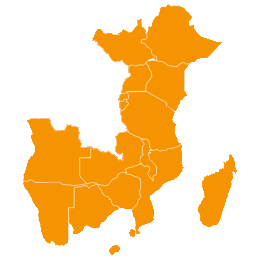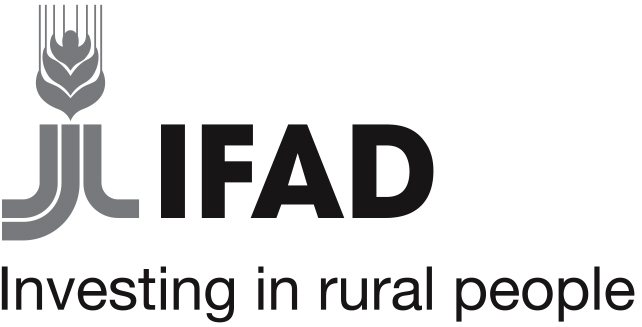Bocage hedges in Rwanda
“In some areas, floods have been avoided altogether thanks to live hedges.”
BACKGROUND
The effects of climate change in Rwanda include soil degradation and downstream flooding in watershed areas. Smallholders must adapt to and mitigate these challenges using limited resources.
Bocage is an agroforestry practice that supports soil integrity and fertility by fencing with shrubs and trees.WHAT’S INVOLVED
Climate change mitigation
The bocage technique uses natural resources like trees and shrubs to mark out areas of farmland. This helps protect the structure of soil and improve its fertility, guarding against leaching and erosion caused by flooding. The hedges are also an additional source of fodder for animals. In some areas, floods have been avoided altogether thanks to live hedges.
Community work and planning
The live hedge practice involves members of the local community, promoting a culture of ownership and environmental stewardship. People who have already created live hedges can share their knowledge with those starting out with the technique.
EXPLORE THIS SOLUTION
The live hedges project can offer
- techniques to help offset soil degradation in watershed areas
- experience of organizing communities to implement and sustain these practices
Show Full Solution
Summary
In Rwanda, smallholder farmers and local institutions are continually adapting to climate change, absorbing information from the environment and taking decisions to reduce any adverse effects. Expert-based and traditional knowledge complement and nurture one another to foster the process of innovation.
A persuasive example of this is the use of bocage, a technique to restore and manage degraded watersheds. It helps reduce the pressure placed on natural resources by human action and climate change. Bocage protects and restores soil fertility in watersheds by fencing plots of land with fodder shrubs and trees, and has the added benefit of eliminating floods in the marshland. The success of bocage as part of PAPSTA (Support Project for the Strategic Plan for the Transformation of Agriculture) project in Rwanda was made possible by the sense of responsibility and ownership amongst participants.
Challenge
As a landlocked country with over 11 million inhabitants spread over an area of 26,388 km2, Rwanda has the highest population density in Africa. This results in pressure on natural resources, particularly water. The agricultural sector provides employment to 87 per cent of the workforce in Rwanda, although it contributes only 40 per cent of the GDP.
Developing resilience to climate change, slowing down and reversing the degradation of watersheds, reducing damage caused by downstream flooding, and increasing the productivity of cultivable lands in the watershed are all major concerns for the economic and social development of the country.
Solution
Bocage is an agroforestry technique that protects and restores soil fertility through fencing with fodder shrubs and trees. This increases the production potential of the land while also producing multiple tree products. It was employed by PAPSTA as part of a participatory mapping project to strengthen the resilience of agro-ecosystems, alongside progressive terracing and contour trenches. This approach enables communities to plan and prioritize actions for soil and water conservation on farmlands.
In practice, bocage involves enclosing a parcel of farming land with live hedges made of forage trees in single or double rows. Based on their density, arrangement and nature, the hedges mitigate sunshine and wind exposure. This helps maintain soil moisture, creating a favorable microclimate for crops, while the root systems of the trees play a role in absorption and recycling of minerals from deeper soil layers. Furthermore, the biomass produced can be developed into organic manure, and the shrubs and wood used for heating and as stakes for beans. Once the fence is established, forage from fresh hedges can be used as fodder for livestock. After a certain period, the land is cultivated by burying dung, vegetable wastes and hedge leaves.
A noteworthy feature of the solution is the linking of bocage with food-for-work programs, an essential step that helped families during the transition period before they started to reap the benefits of the hedging.
Results
Overall, the bocage system had a very positive impact on soil protection and consolidation, and on land resource management in general. Increased soil fertility and reduced flooding downstream were the two major benefits of the innovation.
Additionally;
- Straight branches from the hedges were used as stakes to support climbing beans.
- The leaves of the two main species were an excellent fodder for livestock.
- Pruning for stakes promoted regrowth and production of fresh new foliage for fodder.
- Increased availability of the bi-products also improved soil fertility.
Unexpectedly, hedging also helped resolve conflicts between neighbours by clearly marking the boundaries of each plot of land. Another indirect benefit was the creation of rural networks. Lead farmers became resource persons for others within each network and were tasked with sharing their knowledge with their neighbours. Having personally applied bocage, these farmers were able to offer technical support within their communities, and their experience provided examples to motivate others.
On a broader scale, watershed development and protection (integration of hedging with terracing and distribution of livestock) reduced soil erosion, improved soil productivity and contributed to higher yields and incomes.
Lessons learned and potential for replication
- To be effective, the approach should be developed in a participatory way, starting from the watershed management plans developed by the communities.
- Combining bocage with food-for-work programs is essential since they help the families during the transition period while hedges are developing.
- A reliable supply of planting material and maintenance of the lands by the beneficiaries are essential ingredients for a successful outcome.
- Greater results are generated when the fodder hedging is integrated with terracing and other erosion control measures, and with the distribution of cows and small animals.
Next steps
Scaling up of the program in Rwanda has already taken place. Replicating the program in other parts of Africa and in other regions is the next logical step
Last update: 09/08/2018


